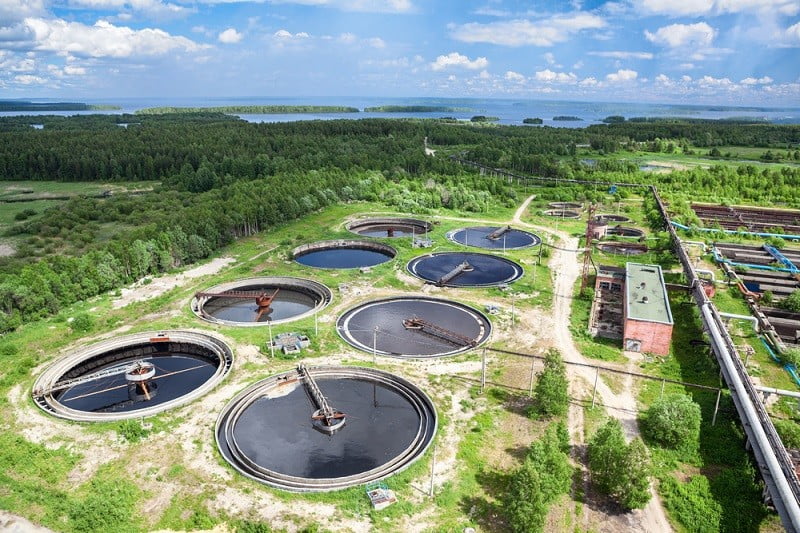Industrial Wastewater Treatment: Custom Solutions for Complex Wastewater Challenges
Industrial Wastewater Treatment: Custom Solutions for Complex Wastewater Challenges
Blog Article
How Liquid Waste Disposal Works: A Detailed Review of Methods and Technologies Used

Review of Fluid Waste Types
The intricacy of fluid waste kinds demands a detailed understanding of their features and effects for disposal. Fluid waste can generally be classified right into numerous kinds, including industrial, local, farming, and contaminated materials. Each classification exhibits distinct homes, needing certain administration strategies to mitigate ecological and wellness threats.
Industrial fluid waste originates from manufacturing procedures and usually contains a series of pollutants, such as heavy steels, solvents, and natural substances. Metropolitan fluid waste, mainly comprising wastewater from houses and industrial establishments, contains raw material, nutrients, and pathogens (industrial wastewater treatment). Agricultural fluid waste, including runoff from ranches, may contain plant foods, pesticides, and pet waste, posturing dangers to water quality and ecological communities
Unsafe fluid waste is defined by its poisoning, sensitivity, or potential to cause damage. Recognizing these diverse liquid waste types is critical for establishing reliable disposal methods and making sure conformity with ecological regulations.
Physical Therapy Methods

Screening is the initial step, where bigger bits and debris are gotten rid of from the liquid waste making use of screens or grates. In sedimentation tanks, heavier bits settle at the bottom, creating a sludge layer, while the cleared up liquid can be further dealt with.
Filtering is another essential approach that includes passing the fluid with permeable materials, such as sand or membranes, to record smaller particles. This action improves the top quality of the fluid, making it suitable for succeeding therapy processes.

Chemical Treatment Techniques
Chemical treatment techniques are necessary for efficiently taking care of liquid waste, particularly in resolving dissolved and colloidal impurities that physical methods might not properly remove. These techniques make use of various chemical representatives to counteract, speed up, or transform harmful substances right into much less damaging forms.
One typical approach is coagulation and flocculation, where chemicals such as alum or ferric chloride are included in advertise the gathering of suspended bits. This process improves sedimentation, allowing for simpler elimination of the resulting sludge. In addition, oxidation processes, utilizing agents like chlorine or ozone, are employed to break down complicated natural compounds and pathogens, rendering the waste safer for discharge or additional therapy.
Neutralization is an additional critical technique, which changes the pH of acidic or alkaline waste streams to neutral degrees, preventing prospective damage to downstream systems and the atmosphere. In addition, progressed oxidation processes (AOPs) use mixes of oxidants and ultraviolet light to weaken relentless toxins, achieving a higher degree of therapy performance.
Organic Therapy Procedures
Biological treatment processes play a critical duty in the monitoring of fluid waste by making use of bacteria to disintegrate raw material and decrease pollutant levels. These procedures can be generally classified right into anaerobic and cardiovascular treatments, each utilizing certain microbial areas to attain efficient waste deterioration.
Cardiovascular treatment involves making use of oxygen to help with the breakdown of natural products by germs. This process is typically executed in activated sludge systems, where oygenation containers supply a conducive environment for microbial development, bring about the oxidation of natural contaminants. The resultant biomass can be separated from dealt with effluent with sedimentation.
On the other hand, anaerobic treatment takes place in the lack of oxygen, relying upon various germs to break down raw material. This method is specifically beneficial for high-strength waste, as it generates biogas, a renewable resource source, while lowering sludge manufacturing. Technologies such as anaerobic digesters are frequently used go in industrial and community applications.
Both anaerobic and cardiovascular biological therapies not just lessen the environmental effect of fluid waste yet additionally promote resource recovery, making them important parts of sustainable waste monitoring techniques. Their performance, adaptability, and efficiency sustain their widespread implementation throughout numerous markets.
Arising Technologies in Disposal
Innovative methods to fluid garbage disposal are rapidly evolving, driven by improvements in technology and a boosting focus on sustainability. Amongst these emerging innovations, membrane bioreactors (MBRs) have gotten grip for their capacity to incorporate organic treatment with membrane layer purification, resulting in premium effluent that can be recycled in different applications. MBRs make it possible for smaller sized footprints and much more effective operations compared to conventional systems.
One more navigate to this site encouraging growth is using anaerobic digestion combined with nutrient recovery technologies, which not only treats liquid waste but also generates biogas and recovers valuable nutrients like nitrogen and phosphorus. This dual benefit enhances source performance and lowers ecological influence.
In addition, progressed oxidation procedures (AOPs) are being embraced for the deterioration of complex organic toxins. These original site approaches make use of effective oxidants and drivers to break down contaminants at the molecular level, supplying a highly effective remedy for difficult waste streams.
Additionally, the combination of expert system and machine understanding in waste monitoring systems is enhancing operational performance and anticipating maintenance, resulting in reduced prices and enhanced ecological conformity. These technologies mirror a substantial shift towards even more sustainable and reliable fluid waste disposal practices.
Final Thought
In conclusion, effective liquid waste disposal requires a detailed understanding of numerous techniques and modern technologies. By constantly advancing these methods, it comes to be possible to deal with the growing difficulties linked with fluid waste, inevitably adding to ecological security and resource healing.
Fluid waste disposal is a critical aspect of environmental monitoring, requiring a detailed understanding of numerous techniques and innovations customized to different waste types. Liquid waste can broadly be categorized into several types, consisting of industrial, municipal, farming, and dangerous waste. Agricultural liquid waste, including drainage from farms, may include fertilizers, pesticides, and pet waste, presenting threats to water top quality and ecosystems.
Various physical treatment techniques play an essential duty in taking care of fluid waste efficiently - industrial wastewater treatment.In conclusion, efficient liquid waste disposal requires an extensive understanding of different techniques and modern technologies
Report this page